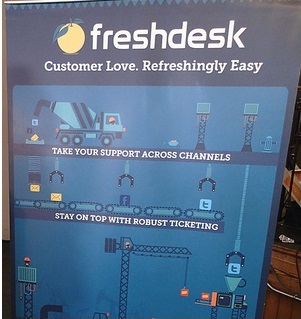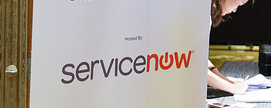Technology Stocks
2017 IPO Prospects: Profitable Zeta Global Waiting For The Stars to Align

A MarketsandMarkets report estimates the global marketing analytics software market to grow from $1.2 billion in 2014 to $2.1 billion by the year 2019. That translates to an annualized growth rate of nearly 12%. Serial entrepreneur David Steinberg’s latest initiative Zeta Interactive is one rapidly growing member in this space. The company appears to be getting ready to go public.
Featured Videos
Can 1M/1M Help Me Raise Money?
How Does 1M/1M Democratize Entrepreneurship Education?
How Does 1M/1M Democratize Management Consulting?
When Is The Right Time To Join 1M/1M?
Can 1M/1M Help Me With Business Development?
Can 1M/1M Help Me With Market Sizing?
Can 1M/1M Help Me Validate My Product?
Will I Have Private 1-on-1 Sessions In 1M/1M?
How Does 1M/1M Help Entrepreneurs Connect With Silicon Valley?
Mentoring or Consulting?
Why Does 1M/1M Charge $1000 a Year?
Why Does 1M/1M Partner With Local Organizations?
Why Don\’t Mentoring Networks Work?
Why Is It Important To Study With 1M/1M Now?
Dan Stewart Story
Vikrant Mathur Story
Death by Overfunding: Jawbone Attempts Another Pivot

According to IDC, the overall wearables market grew 3.1% over the year in 3Q 2016 with total wearables shipments at 23 million. Basic wearables, which primarily comprised of fitness bands, accounted for 85% of the market and recorded double-digit growth. Smart wearables capable of running third party apps are expected to continue to struggle in the near term. Overall though, growth has fallen considerably from the more than 40% growth rates projected back in 2013. This slowdown in market pace has already translated to a significant devaluation of existing players.
India’s First SaaS Product Unicorn: Druva Executes Steadily

Data protection solutions provider Druva was born in Pune but moved to Silicon Valley to create a global product company. It has been executing solidly and quietly without too much hype. >>>
HortonWorks and Red Hat’s Cloud IaaS Focus Pays Off

According to a research by Zion Market Research, the global Hadoop market was worth $7.69 billion in 2016. It is estimated to grow 50% annually over the next five years to be worth $87.14 billion by 2022. Palo Alto-based Hortonworks (Nasdaq: HDP) used to be a Unicorn in the market till a few years ago. Over the past few years, its fumbled. But, things appear to be looking up for the company.
Salesforce.com Now Counts on AI
Salesforce.com (NYSE: CRM) recently reported its quarter’s results that continued to outpace market expectations. It also revised its outlook upwards for the year. According to Piper Jaffray, the company is the “most attractive stock” in its universe. Latest IDC results showcase how Salesforce continues to take market share away from the likes of Oracle and SAP. >>>
Square Appears to be Turning Around

Jack Dorsey did not inspire the market when he took on the leadership position at Square (NYSE: SQ). Analysts were worried that he wouldn’t be able to juggle both Twitter and Square at the same time. But, if the recent performance is an indicator, he does seem to have turned Square around for the better.
2017 IPO Prospects: ShopClues Delays Due To Turmoil in Indian E-Commerce

Analysts may have forecast lofty growth for Indian e-commerce till some time back when they forecast an industry worth $60-$100 billion by the year 2020. But recent reports suggest that the medium-term future may not be as rosy. After recording a stellar 180% growth in 2015 to $13 billion, the industry grew a modest 12% last year to $14.5 billion. The slowdown has caused some of the Billion Dollar Unicorn club members in the sector to delay their listing plans.
India’s Most Important SaaS Venture: Strategic Options Ahead of Freshdesk

Launched in 2010, Freshdesk is a proud flag bearer of India’s presence in the global cloud CRM space. Six months back, it raised $55 million at a valuation of $700 million. This takes its total funding to $149 million. In a recent interview, founder Girish Mathrubootham has said that he plans to do a multi-billion dollar IPO in two-three years. Freshdesk was incubated at 1Mby1M, and I have a tremendous soft spot for the company. Girish has since emerged as a hero for the Indian entrepreneurs, and Freshdesk is now India’s most celebrated product company, hoping to become India’s first billion dollar SaaS success story. A Unicorn.
Is raising this much money a good idea for the company? Perhaps the best way to answer this would be to compare its journey with that of rival Zendesk. >>>
ServiceNow Ready to Deliver Under new CEO
Cloud-based enterprise services provider ServiceNow (NYSE: NOW) continues to outperform market expectations. It recently announced a leadership change when it brought over former eBay and Bain & Co. CEO John Donahoe as the new CEO. ServiceNow’s exiting CEO Frank Slootman took the company from $75 million in revenues to revenues of $1.4 billion last year. And now, the new leader is aiming to grow faster to cross the $5 billion milestone.
2017 IPO Prospects: Blue Apron Ready to Deliver an IPO next

Meal-kit delivery services like Blue Apron have seen stellar success in the recent past, driven by convenience offered to the consumers. By providing recipe instructions along with pre-portioned ingredients, consumers can prepare delicious home cooked meals. Researcher Packaged Facts pegs the US meal kit delivery services market to be worth $1.5 billion last year. It estimates that the industry will grow to be a multi-billion dollar market over the next five years.


